What is a Crate Dog Kennel?
Definition and Purpose
A crate dog kennel is a secure and enclosed space for dogs. It is designed to provide comfort and safety for your pet. Crates mimic a dog’s natural den, offering a safe retreat. They come in various sizes, shapes, and materials. Crates are used for training, travel, and as a resting area.
A well-chosen kennel meets your dog’s needs and ensures practical use for owners. Crate kennels are portable, making them a flexible option for various uses at home or on the go. Whether for short-term containment or long-term use, dog kennels serve a variety of purposes to enhance the pet-owner relationship.
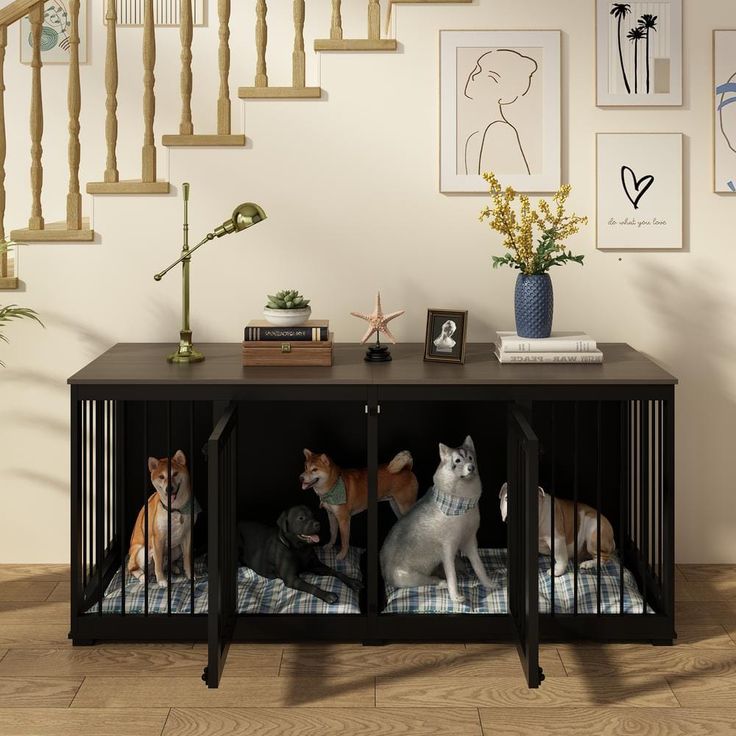
Benefits for Dogs and Owners
Crate dog kennels provide several benefits for dogs:
- Safety: They keep dogs secure in one area, preventing harm when unsupervised.
- Relaxation: Crates serve as a peaceful retreat to rest and feel safe.
- House Training: They help puppies learn bladder control and create good habits.
- Travel: Crates offer a comfortable, safe space for transport.
For owners, crates make life easier and more convenient:
- Damage Prevention: They protect your home from damage caused by pets when left alone.
- Organization: Crates help manage pets during events or visitors.
- Peace of Mind: Owners can be sure their dog is safe and secure.
A crate dog kennel is a valuable tool for training, safety, and bonding with your pet.
Types of Crate Dog Kennels
Choosing the right type of crate dog kennel depends on your dog’s needs and lifestyle. Various kennel styles cater to specific preferences for comfort, durability, and usability.
Wire Crates
Wire crates are popular for their durable design and excellent ventilation. They are foldable, making storage or transport easy. These crates often come with removable trays for simple cleaning. They are ideal for dogs who enjoy seeing their surroundings and prefer airy spaces. Wire crates usually have adjustable dividers, making them suitable as your dog grows. However, they may not provide much privacy and can be noisy on hard surfaces.
Plastic Crates
Plastic crates offer a more enclosed and cozy space for dogs. These are often used for air travel because they meet airline requirements. They feature sturdy plastic walls and a secure metal door. These crates are excellent for dogs that prefer a den-like environment. While they are easy to handle and lightweight, they provide less ventilation compared to wire crates. Cleaning might be a bit harder due to their design.
Soft-sided Crates
Soft-sided crates are lightweight and portable. They’re perfect for small to medium-sized dogs and are commonly used for travel or temporary housing. These crates are made of fabric over a flexible frame and often include mesh panels for ventilation. They are not suitable for destructive chewers or strong dogs. Additionally, they may require extra care to maintain cleanliness and durability.
Heavy-duty Crates
Heavy-duty crates are designed for large and strong dogs. They are built to withstand chewing, scratching, and escape attempts. Made from reinforced metal or steel, they offer maximum security. These crates are ideal for dogs with separation anxiety or high energy levels. Despite their durability, they are heavier and more expensive than other types. Heavy-duty crates often lack portability due to their robust structure.
Each type of crate dog kennel serves a unique purpose. Consider your dog’s behavior, size, and lifestyle before selecting the right one.
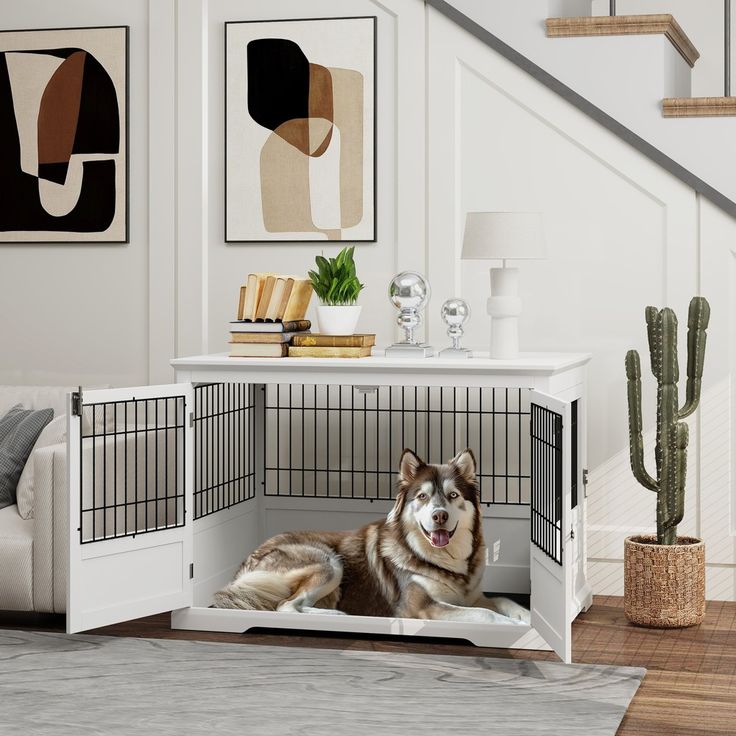
Factors to Consider When Choosing a Crate
Selecting the right crate dog kennel depends on several important factors. Each factor ensures your pet’s comfort, safety, and wellbeing. Evaluate these considerations carefully to make the best choice.
Dog Size and Breed
- Measure your dog’s size before choosing a kennel.
- The crate should allow your dog to stand, turn, and lie comfortably.
- Large breeds need spacious crates, while small breeds require snug, secure kennels.
- Consider your pet’s weight to ensure the crate supports it.
Intended Use (Travel, Training, etc.)
- For travel, opt for lightweight and portable crates.
- Plastic crates are ideal for airline requirements.
- Wire crates are perfect for home use or training purposes.
- Soft-sided crates suit temporary housing for small dogs.
Durability and Material
- Heavy-duty crates suit strong, destructive dogs needing extra security.
- Wire crates offer durability and ventilation but may create noise.
- Plastic crates provide sturdiness but less airflow compared to wire models.
- Soft-sided crates are less durable but highly portable.
Comfort and Ventilation
- Ensure the crate has proper ventilation for your dog’s airflow needs.
- Wire and soft-sided options are excellent for dogs preferring airy spaces.
- Plastic crates offer privacy but might feel enclosed.
- Include a soft bedding to enhance your dog’s comfort.
Considering these factors helps you choose the perfect crate dog kennel for your furry friend. Focus on meeting your dog’s unique needs while ensuring practicality.
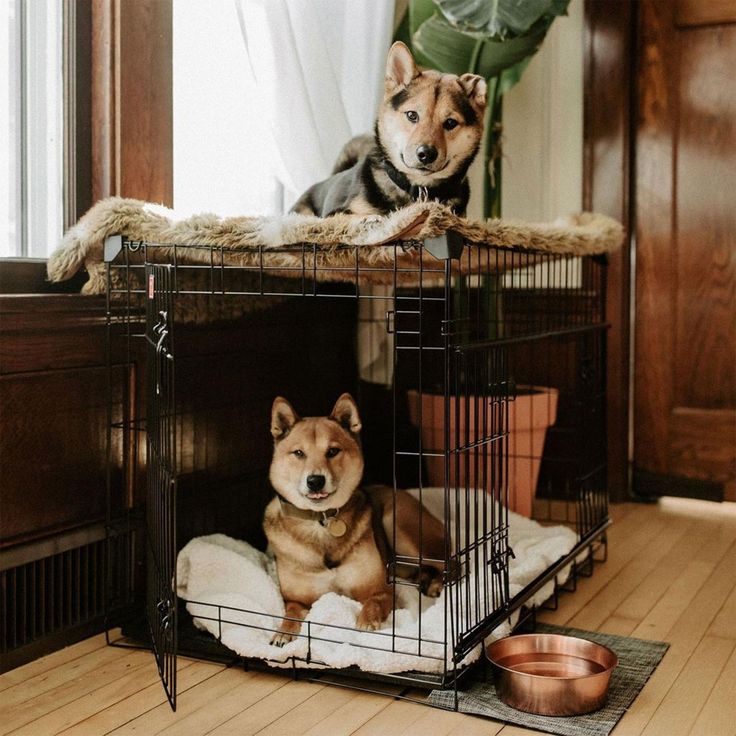
How to Measure Your Dog for the Right Crate Size
Ensuring the right crate size is essential for your dog’s comfort and safety. Proper measurement helps avoid any issues related to space or fit.
Step-by-Step Measurement Guide
- Measure Your Dog’s Length:
- Measure from the tip of your dog’s nose to the base of their tail.
- Add 2–4 inches for extra comfort.
- Measure Your Dog’s Height:
- Measure from the floor to the top of their head while standing.
- Add 2–4 inches for adequate standing space.
- Check the Width:
- Ensure the crate is wide enough for your dog to turn easily.
- This prevents discomfort or a cramped feeling.
- Account for Bedding and Accessories:
- Consider space for bedding, bowls, or any additional items inside the crate.
- Test Fit if Possible:
- Allow your dog to briefly step into a crate model to confirm size before buying.
Common Sizing Mistakes to Avoid
- Choosing a Crate That’s Too Small:
- Leads to discomfort and hinders natural movements.
- Your dog should easily stand, turn, and stretch.
- Opting for an Oversized Crate:
- Makes your dog feel insecure or less cozy.
- Can hinder house training and crate familiarity.
- Ignoring Breed Differences:
- Larger breeds need spacious crates for proper fit.
- Smaller breeds benefit from snug options for better security.
- Not Considering Growth for Puppies:
- Puppies grow quickly; pick adjustable crates for long-term use.
- This avoids frequent buyer replacements.
- Skipping Ventilation Needs:
- Ensure sufficient airflow; wire or soft-sided crates are better for ventilation needs.
Following these steps ensures the crate dog kennel fits your pet perfectly and improves overall usability.
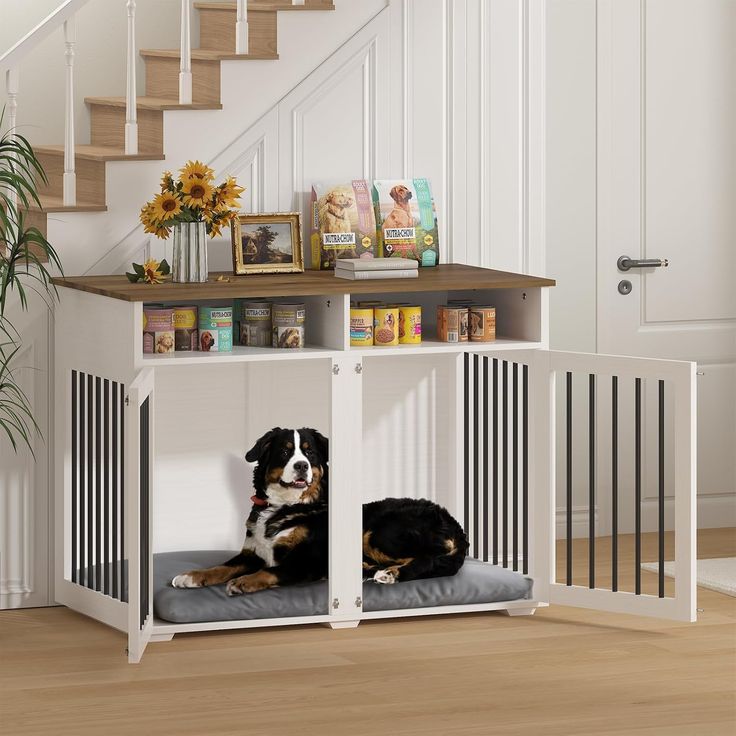
Training Your Dog to Use a Crate
Introducing your dog to a crate can be a rewarding process. Training ensures a positive experience for both you and your pet. Proper techniques help your dog feel safe and comfortable inside the crate. Patience and consistency are key during crate training.
Tips for a Positive Experience
- Create a Comfortable Environment:
- Add soft bedding or a favorite blanket to the crate.
- Place the crate in a quiet, familiar spot.
- Start Slowly:
- Introduce the crate gradually to avoid fear or stress.
- Keep the crate door open at first.
- Use Rewards:
- Use treats or toys to encourage your dog to enter the crate.
- Reward every positive action related to the crate.
- Short Sessions Initially:
- Begin with 5–10 minutes of crate time.
- Slowly increase the duration as your dog adjusts.
- Make It a Positive Zone:
- Avoid using the crate as punishment.
- Encourage relaxation to create positive associations.
- Mealtime in the Crate:
- Place your dog’s food bowl inside the crate.
- This helps associate the crate with positive experiences.
Addressing Common Challenges
- Whining or Barking:
- Stay calm and avoid letting your dog out during whining.
- Reward calm and quiet behavior instead.
- Fear of the Crate:
- Be patient and avoid forcing your dog inside.
- Use a relaxed tone and slow movements to comfort them.
- Accidents in the Crate:
- Ensure the crate size fits your dog properly.
- Take your dog for potty breaks before crating.
- Separation Anxiety:
- Gradually increase the time your dog spends alone in the crate.
- Offer a chew toy or puzzle to keep them occupied.
- Destructive Behavior:
- Use durable bedding and toys for destructive dogs.
- Ensure your dog has enough exercise and mental stimulation daily.
With these tips, crate training becomes easier and more enjoyable. A crate dog kennel can turn into your dog’s favorite safe space with proper care and consistency.
Cleaning and Maintenance Tips for Crate Dog Kennels
Proper cleaning and maintenance ensure your crate dog kennel stays safe, comfortable, and durable. Regular care prevents odors, germs, and wear, keeping your dog healthy and happy.
Keeping Your Crate Hygienic
- Daily Cleaning:
- Remove any waste, spills, or debris daily.
- Wipe down surfaces with a pet-safe cleaner.
- Wash Accessories Frequently:
- Clean bedding, toys, and bowls regularly.
- Use hot water and mild detergent to remove bacteria.
- Sanitize Weekly:
- Disinfect the crate weekly to kill germs and odors.
- Rinse thoroughly to avoid chemical residue.
- Focus on Odor Control:
- Use baking soda or pet-safe sprays for odors.
- Ensure the crate is dry after cleaning to prevent mold.
- Inspect for Damage:
- Check for sharp edges or broken parts before use.
- Repair or replace damaged sections immediately to maintain safety.
Long-term Care and Durability
- Regular Maintenance:
- Tighten screws or bolts in wire and heavy-duty crates.
- Check zippers and seams in soft-sided crates for wear.
- Protect Against Chewing:
- Provide chew-resistant bedding and toys for destructive dogs.
- Monitor wear and tear caused by chewing.
- Store Properly:
- When not in use, fold and store properly to prevent rust or deformation.
- Keep the crate in a dry and cool area.
- Choose High-quality Materials:
- Invest in durable crates for long-term use.
- Avoid materials that are prone to cracking or rusting.
- Prevent Overuse:
- Rotate between crate use and open spaces to reduce wear.
- Avoid overexposing the crate to sunlight or moisture.
By following these tips, your crate dog kennel remains clean, safe, and long-lasting, ensuring your dog’s well-being.
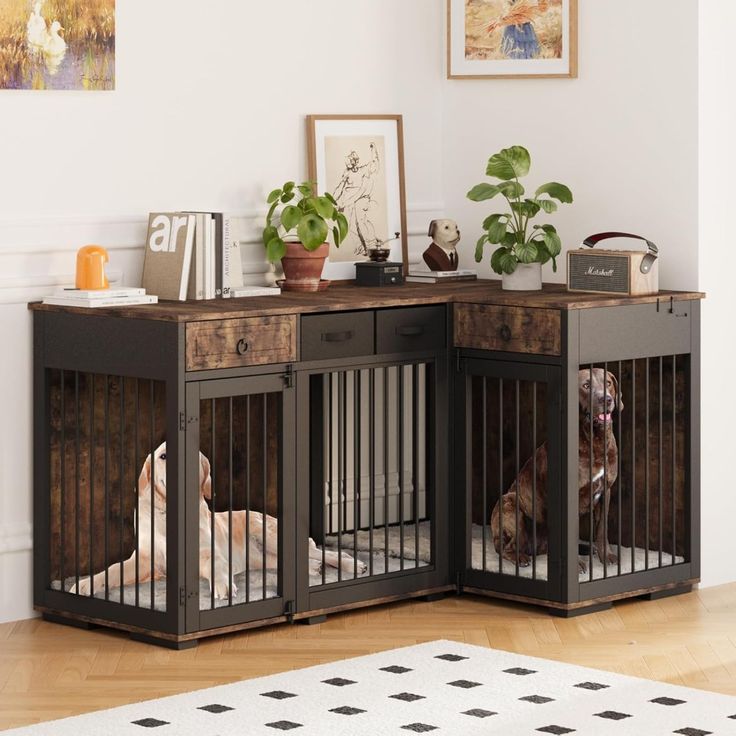
Popular Brands and Models of Crate Dog Kennels
Finding the right crate often involves exploring trusted brands and their offerings. Many leading brands provide innovative designs, quality materials, and features focused on your pet’s comfort and safety. Here’s an overview of these brands and what makes their products standout.
Overview of Leading Crate Brands
- MidWest Homes for Pets: Known for durable wire and plastic crates, MidWest offers a variety of sizes and models. Adjustable dividers and easy assembly are key features.
- Petmate: Specializing in plastic crates, Petmate models meet airline travel requirements. They provide excellent durability and a cozy environment for dogs.
- EliteField: A favorite for soft-sided crates, this brand emphasizes portability, lightweight designs, and superior ventilation.
- ProSelect Empire: Renowned for heavy-duty crates, ProSelect crates are made of reinforced steel. They are perfect for strong or escape-prone dogs.
- Frisco: Frisco produces affordable wire and plastic crates with functional designs and easy-to-clean materials. Ideal for home use and training purposes.
- Gunner Kennels: Offers high-performance, heavy-duty models designed for safety during car travel. These crates are built to last.
Pros and Cons of Top Models
- MidWest iCrate:
- Pros: Sturdy design, excellent ventilation, adjustable divider, and budget-friendly.
- Cons: Can be noisy and less secure for escape-prone dogs.
- Petmate Sky Kennel:
- Pros: Airline-approved, robust construction, secure latch, and proper ventilation.
- Cons: Heavier than other options and less visibility for dogs.
- EliteField 3-Door Soft Crate:
- Pros: Lightweight, portable, and easy to set up or fold away.
- Cons: Not suitable for chewers or strong, active dogs.
- ProSelect Empire Crate:
- Pros: Superior strength, chew-resistant, and designed for large and strong dogs.
- Cons: Heavy, expensive, and less portable.
- Frisco Fold & Carry Crate:
- Pros: Affordable, simple to assemble, with removable trays for cleaning.
- Cons: Limited privacy, and not ideal for heavy chewers.
- Gunner G1 Kennel:
- Pros: Highly durable, crash-tested, and great for travel safety.
- Cons: Expensive and very heavy for regular portability.
When choosing a crate, evaluate your dog’s needs and your specific use case. Reliable brands and models ensure quality and comfort, helping you find the perfect fit.
Frequently Asked Questions About Crates
How Long Can a Dog Stay in a Crate?
Dogs should not stay in crate dog kennel for extended durations regularly. Puppies can stay inside for 2–4 hours. Adult dogs can typically stay for 4–8 hours, depending on their needs. Always provide breaks for exercise, food, and bathroom needs. Crates are not a substitute for human interaction or outdoor activity. Avoid leaving your dog in a crate overnight without proper preparation and training.
Are Crates Safe for All Dogs?
Most dogs can use crate dog kennel safely with proper care and training. Puppies and adult dogs may benefit from using crates. Dogs with claustrophobia or prior negative experiences might resist crate use initially. Strong and escape-prone dogs need reinforced crates for added safety. Always match the crate size and type to your dog’s specific needs. Consult a veterinarian if unsure about your dog’s suitability for crate training.

